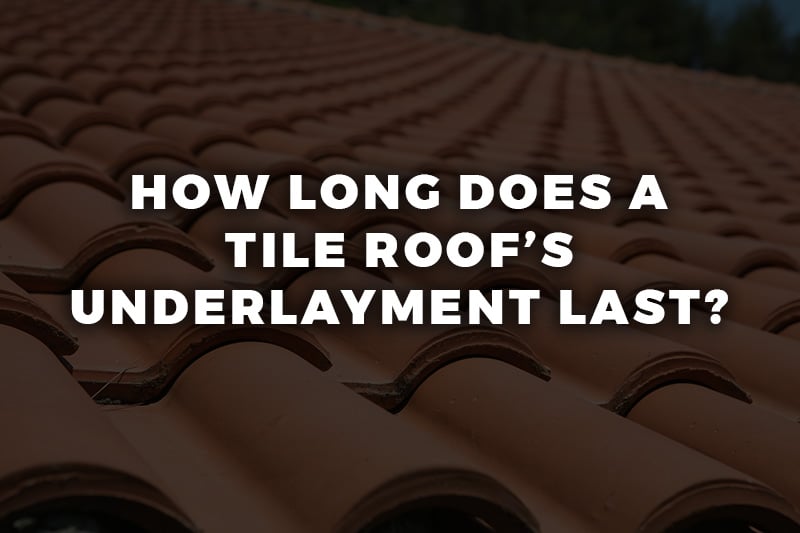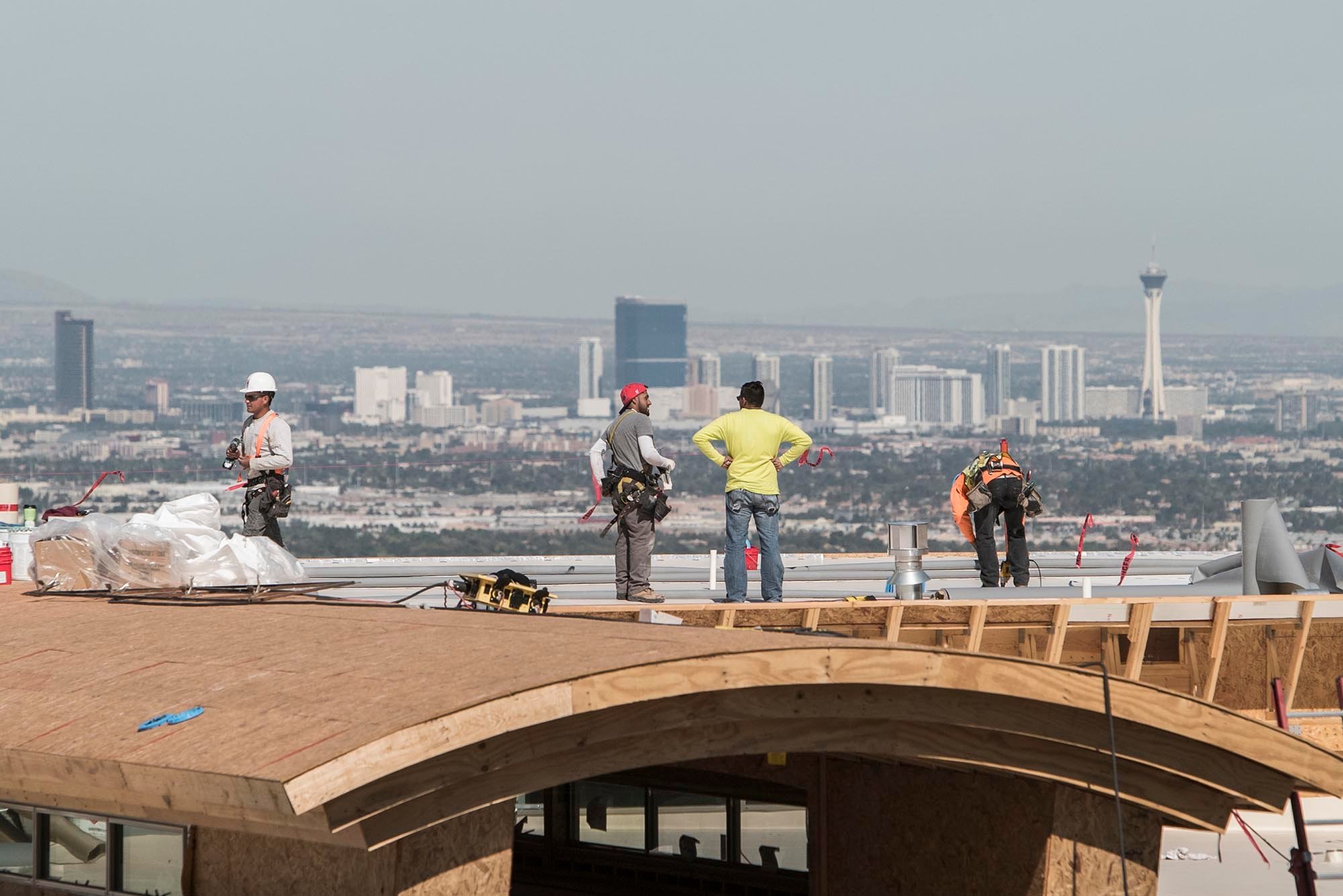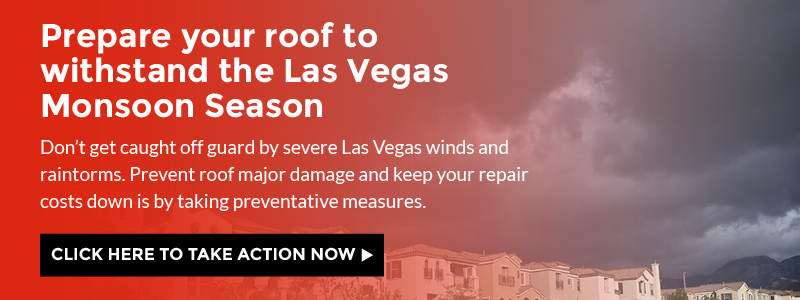
A tile roof can be a beautiful addition to your home that provides lasting protection and value.
When it comes to residential roofing, tile roofs are a great choice because they are well-suited to harsh desert climates and are resilient against heat, sunlight, and the rare summer storm. However, that same climate can take a toll on a tile roof’s underlayment (the layer of material between the roof deck and tile). Once you learn about the underlayment’s lifespan and the cost to replace it, you can better decide if a tile roof is right for you. In addition, if you already have a tile roof, you can determine the cost for residential roof repair.
The Anatomy of a Tile Roof
Tile roofs have a more sophisticated construction than other types of roofs given the tasks they must perform. A tile roof must bear the considerable weight of its tiles for decades across a wide variety of weather conditions. Given these conditions, tile roofs are subject to more regulations than a typical shingle roof. The International Residential Code recommends that clay or concrete tile roofs have a minimum pitch of 2.5:1 while slate roofs should have a minimum pitch of 4:12.
The foundation of a tile roof is the roof deck (the layer of material that serves as a barrier from outside elements and bears the load of all the other components of the roof). On top of the roof deck is the underlayment, which is typically made of synthetic materials and provides waterproof protection during and after construction. Thin strips of material called battens lay across the underlayment and serve as anchors for fasteners, nails, hooks, or other mechanisms that hold the tiles. Finally, the tiles themselves are attached to these across the roof.
Related: Why Do Roof Tiles Slip?
Some tile roofs have additional features to protect against severe weather conditions, especially in areas that experience heavy rains or freezing temperatures. Some roofs may make extensive use of metal flashing to redirect water, especially if they have objects that penetrate the roof deck. Roofs with chimneys may need a cricket, an angled, ridge-like structure that prevents water from pooling at its base. Others may have an ice dam protection membrane, which is an extension of the underlayment and helps to prevent the formation of ice near the eaves.
What Is the Lifespan of a Tile Roof?
The lifespan of a tile roof varies depending on what type of material is used for the tiles and how well it is maintained. Under optimal conditions, concrete tile roofs can last 50 years or more and are relatively inexpensive. Clay roofs last anywhere from 50 to well over 100 years and are more expensive than concrete tile but typically have great resale value. Slate tile roofs can last 75 to 200 years if they are properly maintained but are expensive and come in a limited array of shapes.
A tile roof can last a lifetime with proper maintenance, but there are some factors which can reduce its lifespan. While birds can seem harmless, their droppings contain high levels of uric acid, which can weaken concrete tiles if left to sit on them over time. Leaves and other debris can also collect on your roof and form water dams, which can weaken tiles or their supports. In addition, storms can knock over nearby trees or branches, which can damage tiles or other parts of your roof.
Tiles need proper care to last their expected lifespan, but the most vulnerable part of your roof is the underlayment beneath them. Tiles are designed to quickly channel water off of your roof, but the underlayment is what actually what stops leaks. Unfortunately, it can deteriorate over time, especially in areas like the desert with rapid temperature shifts. If this seal breaks, your roof could suffer significant water damage, which can greatly shorten its lifespan.
How Long Does the Tile Roof Underlayment Last?
The lifespan of tile roof underlayment varies depending on what it is made of and what kinds of conditions it is exposed to. The underlayment typically has much lower lifespan than the tiles, which means if you have a tile roof, you’re more or less guaranteed to need to replace the underlayment eventually. A wide range of factors can reduce its lifespan such as extreme heat or cold, pests, or physical damage from debris. If the underlayment fails, water can quickly damage your roof, which can threaten its structural integrity.
Asphalt felt is the oldest and most common type of underlayment, and it typically lasts anywhere from 20 to 30 years, but in some cases it can last as little as eight. Newer synthetic or rubberized asphalt underlayments are much more durable than asphalt felt and offer better protection against water. These underlayments can last 25 years or more with inspections. It’s important to schedule regular inspections of the underlayment every 3 to 5 years, or after you suspect it has been damaged, to maximize its lifespan.
How Much Does It Cost to Replace the Underlayment on a Tile Roof?
The cost to replace the underlayment on a tile roof depends on several factors, including:
- The condition of the underlayment
- The complexity of your roof
- The number of tiles that need to be replaced in the process
The cost to replace a tile roof is usually priced out in squares, or measures of 100 square feet. You should plan on losing anywhere between 10-15% of your tiles during a roof replacement. In addition, it helps to add an extra 10% or so to your estimated budget to account for unexpected expenses.
Porch.com reports that the national average price range for one square of underlayment is between $67 to $82. With labor costs factored in, the price to fully replace the underlayment rises to anywhere from $360 to $510 per square. This price can be higher depending on the complexity of your roof and will generally comprise the bulk of your expenses. Costs can increase if you have missing or broken tiles during the replacement process, which you’ll need to pay to haul away and replace.
While they have a higher upfront cost and be costly to repair, a tile roof can offer a lifetime of beauty and protection. As the underlayment has a lower lifespan than the tiles above it, you’ll want to factor in the expected cost of replacing it when making a decision to buy a home with a tile roof or upgrade your existing one. As with any home improvement project, it helps to seek out multiple estimates from contractors to get the best deal possible. While tile can last a lifetime, you’ll need to stay on top of repairs to get the most out of it.






